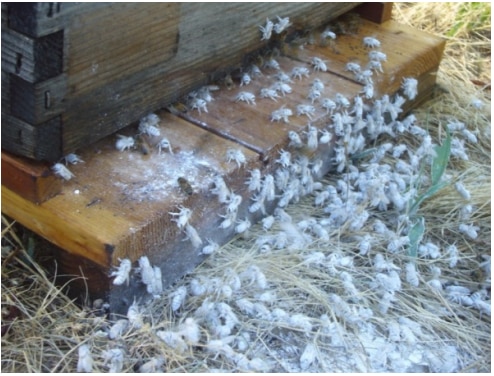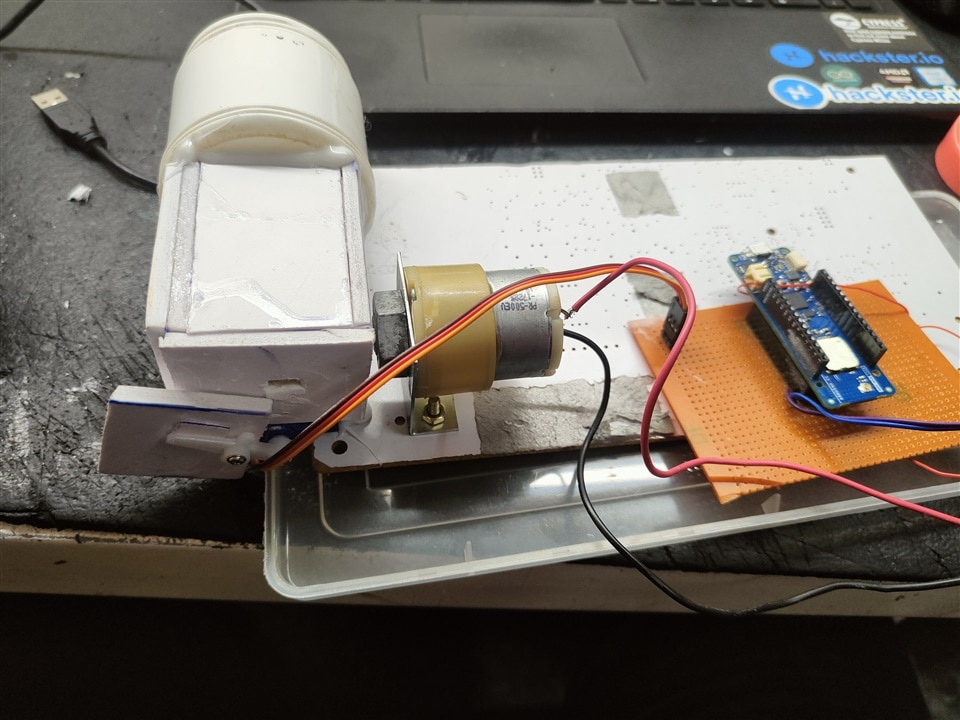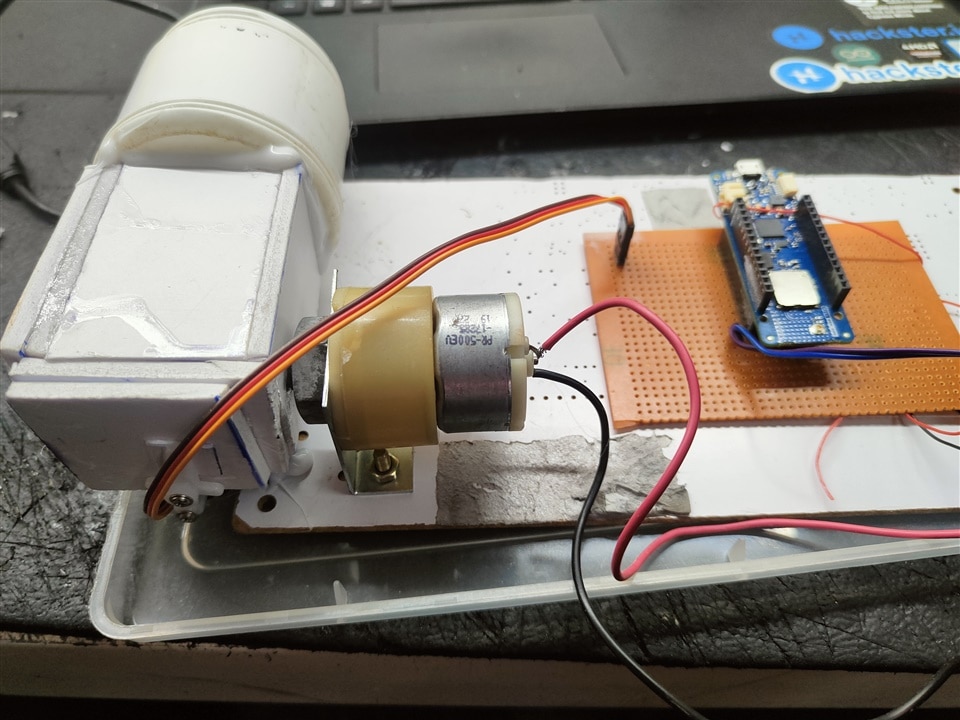Sugar shaking
Sugar shaking of honey bees is a passive method to detect external parasites such as Varroa mites, Tropilaelaps mites, and Braula fly. It is a quick and easy method that does not kill the honey bees sampled. The method works by the fine sugar particles dislodging external parasites by stopping their sticky pads (feet) from gripping onto honey bees and also by stimulating the grooming behavior of honey bees. The sugar is then separated from the bees and inspected for external parasites. The efficiency of this surveillance method increases the warmer the atmospheric temperature.

Honey bees coated in icing sugar are returned to the hive entrance after sugar shaking. Image courtesy of Randy Oliver, www.scientificbeekeeping.com
there are several methods are there to remove external parasites, these seem to be life-threatening for bee life, most common of those is alcohol washing. sugar shaking method is not as effective as the alcohol wash method to remove external parasites but it's not life-threatening for bee life.
In the current project, I am using the sugar shaking method to remove external parasites by automating using Arduino MKR WAN 1310. this system detects the bee's entry inside the hive and sprinkles the icing sugar and creates the vibration to remove the parasites. in the below video, you can find the icing sugar sprinkling mechanism only.


Testing Video

-

ralphjy
-
Cancel
-
Vote Up
0
Vote Down
-
-
Sign in to reply
-
More
-
Cancel
Comment-

ralphjy
-
Cancel
-
Vote Up
0
Vote Down
-
-
Sign in to reply
-
More
-
Cancel
Children